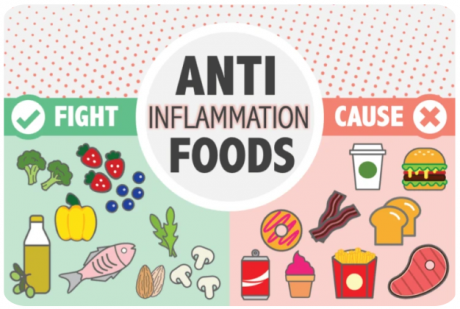If you’ve ever had an inflammatory condition, such as arthritis or psoriasis, you’ll know that it’s no fun. Inflammation is the body’s response to injury or infection and can cause pain, swelling and tenderness. In some cases, it can also lead to long-term illness such as heart disease or cancer. To lower your risk of chronic inflammatory diseases (and reduce the severity of flare-ups if they occur), it’s important to cut back on certain foods that promote inflammation in the body.
French fries
French fries are high in fat. Two medium-sized servings of French fries contain approximately 13 grams of saturated fat and 30 grams of sodium. You can also eat 200 or more calories just by eating a few pieces of regular French fries.
French fries are bad for your heart health, too. If you eat French fries all the time and don’t exercise, they will increase your chance of developing cardiovascular disease by 10 percent within 10 years of starting to eat them regularly.
Corn oil
Corn oil is a highly refined oil that has been stripped of its nutrients. It’s a major source of omega-6 fatty acids, linoleic acid (LA), arachidonic acid and trans fats.
The main problem with corn oil is that it contains high levels of LA. Unlike healthy omega-3 fatty acids found in fish—eicosapentaenoic acid (EPA) and docosahexaenoic acid (DHA)—LA cannot be converted into EPA or DHA. In other words, you can’t get any health benefits from eating LA unless you eat it alongside EPA and DHA!
Corn oil also contains a lot of arachidonic acid (AA), which may promote inflammation in your body if not balanced by anti-inflammatory omega-3s like EPA and DHA.
Vegetable oil
Vegetable oil is one of the most inflammatory foods you can eat. It’s high in omega-6 fatty acids and low in omega-3s, which means it increases inflammation in the body.
When vegetable oil enters your bloodstream, it creates free radicals that cause oxidative damage to cell membranes and DNA. This process leads to chronic inflammation, which is a risk factor for heart disease, cancer, and other health conditions.
Margarine
Margarine is a high-fat spread, made from vegetable oils. It is popular because it contains less saturated fat than butter and has no cholesterol. However, the hydrogenation process used to turn liquid oils into solid fats increases their trans fatty acid content.
When eaten in large amounts, trans fats can increase blood cholesterol levels by up to 15%. They also reduce ‘good’ HDL (high-density lipoprotein) cholesterol while increasing ‘bad’ LDL (low-density lipoprotein) cholesterol. In addition, the increased intake of refined carbohydrates (such as sugar or glucose) that accompanies eating margarine may further contribute to raised blood sugar levels and diabetes risk. Margarine contains very little vitamin A or E compared with natural animal fats such as butter – both nutrients are important antioxidants that protect us from free radical damage by neutralising these damaging molecules
Red meat (including hamburgers)
Red meat is a high-inflammatory food. This means that it has been linked to an increased risk of heart disease, diabetes and certain types of cancer. Though red meat can be a good source of protein, iron and zinc (when eaten in moderation), it’s also high in saturated fat and cholesterol—and these are two nutrients you want to avoid as much as possible when trying to reduce inflammation in your body.
Fried food is bad for you. So are red meat and farmed fish.
There are three major problem foods that you should avoid if you want to reduce inflammation in the body:
Fried food: This one is pretty simple—frying anything creates trans fats, which are inflammatory and bad for your heart. Frying causes the oils in food to oxidize, creating free radicals in the process. And like most other sources of free radicals, cooking releases cancer-causing compounds into our bodies that can lead to cellular damage and disease as we age.
Red meat/poultry: Meat from animals raised on factory farms is high in saturated fat and omega 6 fatty acids—two things that cause inflammation throughout the body (and have been linked to chronic diseases like cancer). Grass-fed beef has fewer inflammatory properties because it contains more omega 3s than grain-fed beef does; however, it still has some of those same inflammatory effects due to being cooked at high temps or being processed into sausage or bacon (which contain nitrates). You should try eating grass fed beef instead of regular beef whenever possible but know that even grass fed may not be 100% healthy for humans because it still contains some toxins from its environment which may make things worse over time rather than better .
Conclusion
So, I hope this article has helped you understand why fried foods and red meat are bad for your health. The key takeaway is that we all love to eat, but it’s important to make sure we’re eating healthy options so that we stay productive and energetic throughout our day.
Jason Ferine Physical Therapy
2300 Westwood Blvd, Ste. 100
Los Angeles, CA 90064
Tel: 424-365-2083
Fax: 310-943-3532
Email: jfptoffice@gmail.com or jasonferinept@gmail.com



